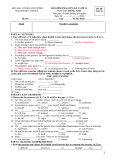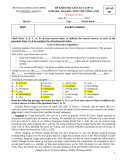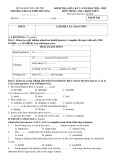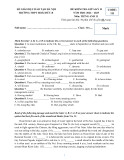3. Câu tường thuật với động từ theo sau bằng động từ nguyên thể
- tell/ask sb + to V: bảo/yêu cầu ai làm gì
- advise sb + to V: khuyên ai làm gì
- promise + to V: hứa làm gì
- threaten + to V: đe doạ làm gì
- warn + sb + not to V: cảnh báo không nên làm gì
- invite sb + to V: mời ai làm gì
- remind + sb + to V: nhắc nhở ai làm gì
- encourage sb + to V: khuyến khích ai làm gì
- offer + to V: đề nghị làm gì
- agree + to V: đồng ý làm gì
4. Câu tường thuật với động từ theo sau bằng danh động từ
- accuse sb of + V-ing: buộc tội ai vì làm gì
- admit + V-ing: thừa nhận làm gì
- deny + V-ing: phủ nhận làm gì
- apologize (to sb) for + V-ing: xin lỗi ai vì làm gì
- blame sb for + V-ing: đổ lỗi cho ai vì làm gì
- complain (to sb) about + V-ing: phàn nàn về điều gì
- confess to V-ing: thú nhận làm gì
- congratulate sb on + V-ing: chúc mừng vì làm gì
- criticize sb for V-ing: chỉ trích vì làm gì
- insist on + V-ing: khăng khăng làm gì
- object to + V-ing: phản đối làm gì
- suggest + V-ing: gợi ý/đề nghị làm gì
- thank sb for + V-ing: cảm ơn ai vì làm gì
- warn sb against + V-ing: cảnh báo ai không nên làm gì
B. BÀI TẬP ÁP DỤNG
Exercise 1: Viết lại câu bằng cách chuyên từ câu trực tiếp sang câu gián tiếp
1. Nam said: "I am told to be at school before 7 o'clock".
....................................................................................................................................................................
2. Thu said: "All the students will have a meeting next week".
....................................................................................................................................................................
3. Phong said: “My parents are very proud of my good marks".
....................................................................................................................................................................
4. The teacher said: "All the homework must be done carefully".
....................................................................................................................................................................
5. Her father said to her: "You can go to the movie with your friend".
....................................................................................................................................................................


























